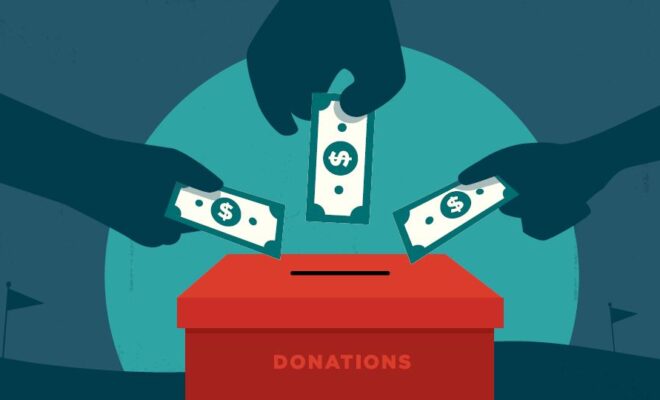Governmental Affairs: Why We Do What We Do
THE GAME’S CHALLENGES AREN’T GOING AWAY ANYTIME SOON
SCGA GOVERNMENTAL AFFAIRS was asked by the International Association of Golf Administrators (IAGA) to participate in a 75-minute presentation about the utility of advocacy to the 200 mostly amateur golf association leaders attending the organization’s recent annual meeting. The SCGA was joined by the Metropolitan Golf Association (New York), World Golf Foundation and San Francisco Public Golf Alliance to provide four specific perspectives on the subject — two states on opposite ends of the country to give the state perspectives, the organization charged with conducting National Golf Day in Washington, D.C., to provide the national perspective, and a city-specific organization to provide insight on what it means to advocate for the game at the grass roots.
SCGA was certainly encouraged by the focus given the subject. We’ve been an outlier among the game’s leadership organizations for a long time,
waiting for first adopters to join us in recognizing the utility of adding public/governmental affairs functionality
to their member services. We were beginning to wonder whether we were particularly prescient or just wizened by the realities of doing business and recreation in the state of California.
The conference was evidence that the SCGA was less brilliant than it was just a bit ahead of everyone else. Whether that makes living in California an advantage or a disadvantage is a subject for another day, but adversity does tend to make you sharper. Or it breaks you.
Well, we’re hardly “broken” here in Southern California, and that’s what we proceeded to present to the national assembly. More specifically, we asked and then answered the following three questions: What does the SCGA Governmental Affairs Department do? How does it do it? And why does it do it?
Readers of FORE probably have a pretty firm fix on what our department works on: legislation, regulation, water, taxes, land use, municipal golf, environment, communities. In other words, anything of a public policy nature that affects the game.
READERS OF FORE may also have some insight as to how the SCGA tries to influence these issues, but only “some.” Bismarck’s quip about not taking too close a look at how laws or sausage are made comes to mind as the best explanation for not sharing too much of that detail.
But the most important of the three questions — why the SCGA does what it does — is what most piqued the interest of the 200 golf administrators at the IAGA conference, and it’s probably the question that most piques the interest of SCGA’s 175,000 members. And unlike the “how” question, it is one that SCGA Governmental Affairs can answer definitively for FORE’s readers.
TO SOMEONE WHO labors every day in these fields, the answer to the “why” question rises to the level of self-evident. If not the amateur association, then who? PGA professionals? Superintendents? General managers? Ownership/management groups? The myriad suppliers (e.g., irrigation, machinery, herbicides)? How about the club manufacturers domiciled in Southern California?
Each of them represents a narrow interest — important interests to be sure and interests involved in the California Alliance for Golf on matters of statewide concern — but narrow interests nonetheless. Although all of them can lay claim to being critical stakeholders in the game, none of them has the bandwidth or numbers required to represent every aspect of the game. And what numbers they do have are either very small, as in the case of the professional/occupational organizations, or profit driven, as is the case with ownership/management groups and manufacturer/suppliers.
Small numbers don’t equate to political heft. Profits negate all pretense of disinterest. But an organization with a tagline like SCGA’s “your passion, our purpose” can lay credible claim to both. Some might call it leadership by default; others leadership by best available option. We would call it leadership by assumption of the responsibility that any nonprofit organization of 175,000 devotees of a specific activity must exercise in order to be fully faithful to its mission.
READERS OF FORE PROBABLY HAVE A PRETTY FIRM FIX ON WHAT SCGA GOVERNMENTAL AFFAIRS WORKS ON: LEGISLATION, REGULATION, WATER, TAXES, LAND USE, MUNICIPAL GOLF, ENVIRONMENT, COMMUNITIES. IN OTHER WORDS, ANYTHING OF A PUBLIC POLICY NATURE THAT AFFECTS THE GAME.”
In this case the specific activity is golf and the mission is to serve the interests of golf and golfers, not just the 175,000 who are members of the SCGA, but the thousands more who just haven’t yet seen the wisdom of joining them in common cause.
“Common cause” is a phrase redolent of the American Revolutionary War and generally applied to “causes” that are much higher-minded than a game, but a phrase applicable here in its own small way. It’s applicable in this limited sense to any organization that brings together persons with a common interest, whether that interest is clean beaches, urban parks, safe neighborhoods, bicycling, youth sports, wetlands, senior services or any of the hundreds of other interests that fire folks’ passions.
WE DON’T KNOW WHETHER we persuaded the golf administrators at November’s IAGA conference that their mission requires more of them than Handicap Indexes, Course Ratings and a robust championship calendar, but we do know that this was the first time the IAGA had devoted a lengthy general session to the subject of the role of the golf association in advocating for the game.
We know that the public policy issues that we and our fellow presenters highlighted were issues of deep concern to them. We know that many in that room had already begun to contemplate how they too might add advocacy to their organizations’ quivers of member services. We know that here in California our allied associations and organizations appreciate and support our assertion of leadership.
And we trust that this foray into why we do what we do at the SCGA leads you to conclude that we serve your interests, your club’s interests, and the interests of the game. The game’s public policy challenges aren’t going away anytime soon.











